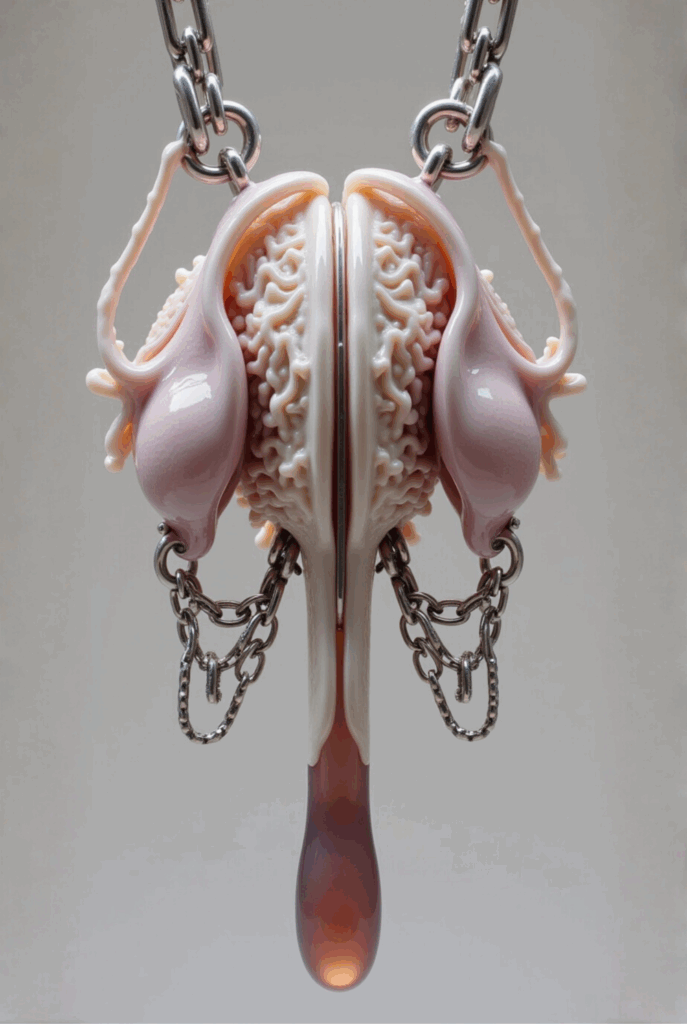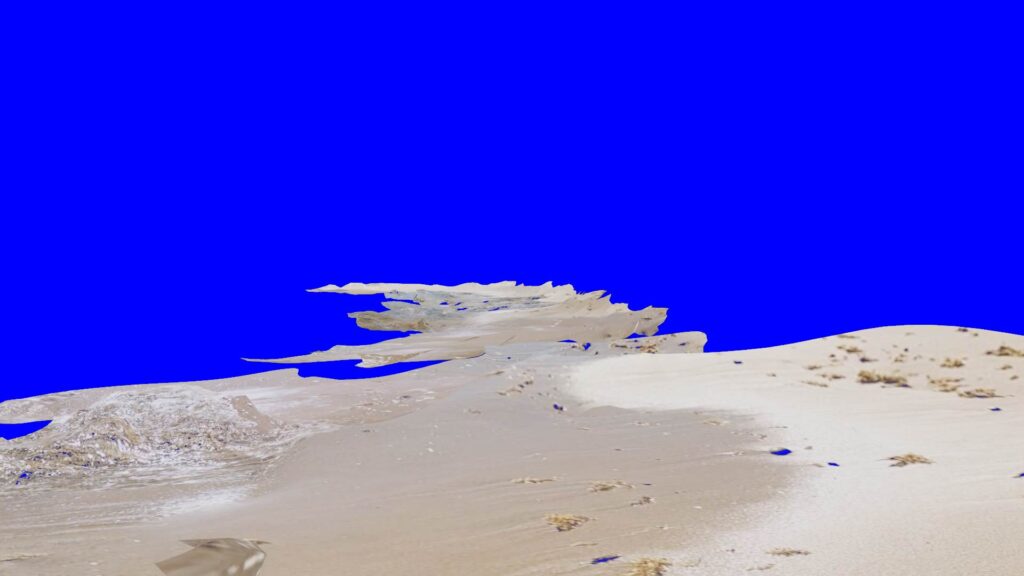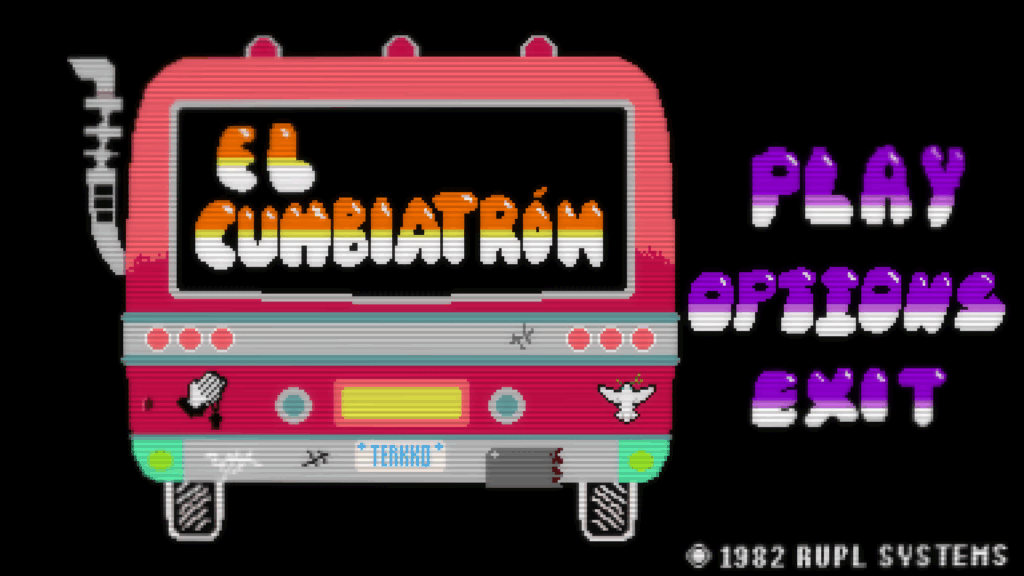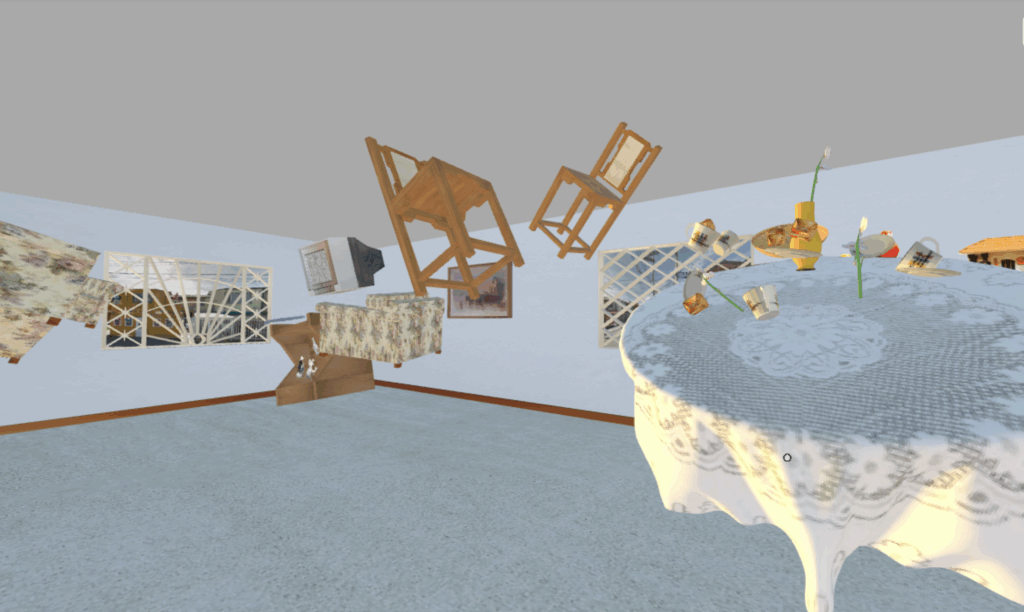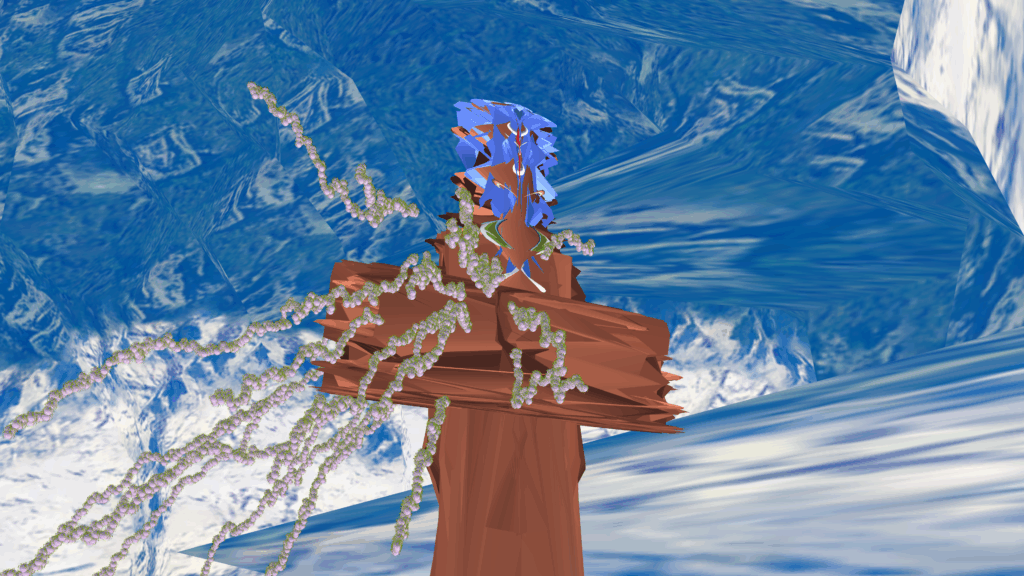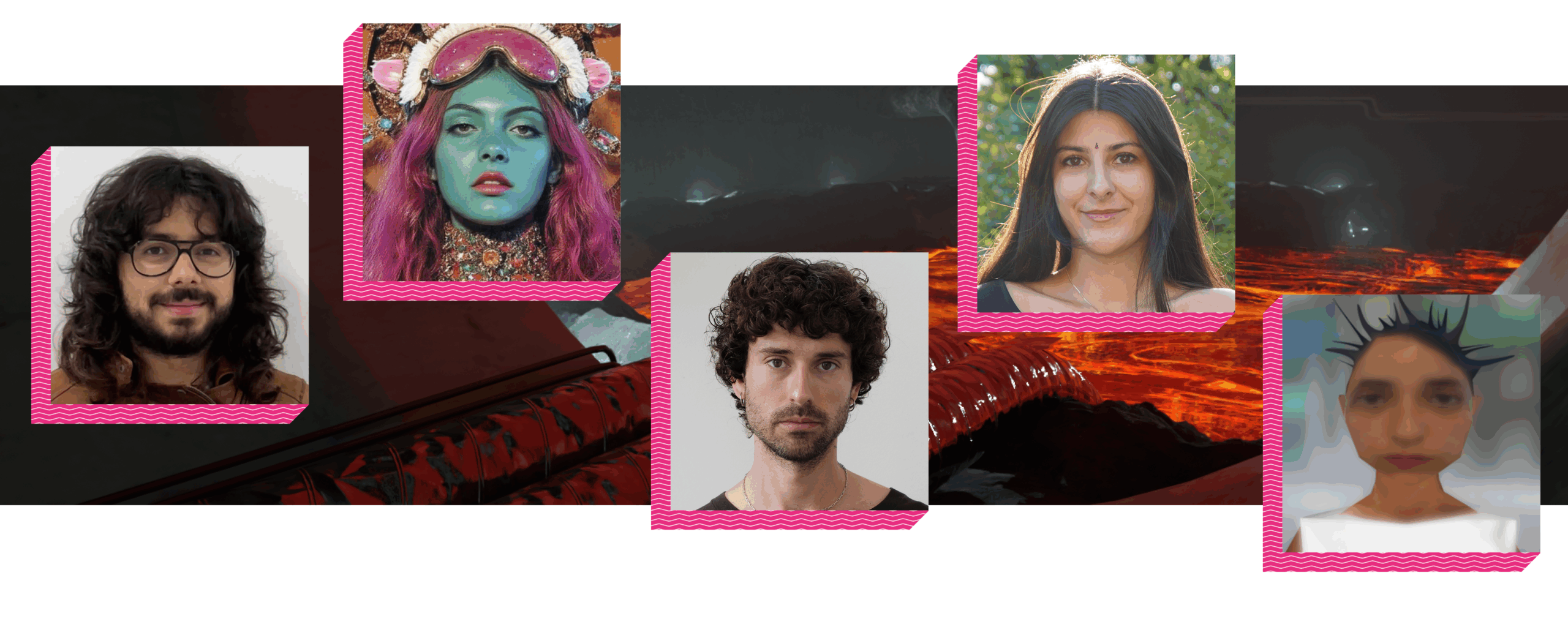
EVA GRANT
Exquisite Machines for Making Anything But Children, 2025
Digital image series
Integrating cyber-feminism, queer ecology, and crip poetics, Exquisite Machines for Making Anything But Children is a speculative counter-anatomy conceived by Eva Grant for healing following her miscarriage. In a society obsessed with viability, this series cuts the cord between reproduction and utility, repositioning the womb not as a site of extraction, but rather an incubator of autonomy. Midwifing refusal, Exquisite Machines do not produce children; they are a surrogate for futures the world is not yet equipped to carry.
The jury recognizes Eva for her bold digital exploration of speculative, queer reproductive organs—forms that echo the anatomical while also departing into the surreal. Her work confronts feminist biopolitics and the social construction of reproductive bodies in relation to commodification, fetishization, and the pressures of heteronormativity. Glossy, fleshy, and intricately entangled, these sculptural renderings pulse with both vulnerability and power. Distinct in concept and form, Eva’s radical refusal of AI in favor of meticulously modeled, artist-driven digital creation asserts both an aesthetic and political stance, making the work as unsettling as it is striking.
– Bomi Yook, media artist and 2023 EDAA recipient | 2025 EDAA guest judge

Eva Grant is a St̓át̓imc-Eurasian filmmaker, writer and artist based in BC whose work is grounded in archive, interface, and ecology. She has held fellowships and residencies through the Sundance Institute, imagineNATIVE, Artengine, the Vancouver Queer Film Festival, and the Art Gallery of Ontario. A technological Trickster of the Indigital realm, she prototypes near-worlds, capacious futures, and their imagined implements. She studied philosophy and literature at Stanford University and is the founder of Tooth & Nail Pictures.
ALEX GIBSON
Untitled Passage, 2025
Photogrammetry, animation; 4:41
Untitled Passage is a 3D-scanned, one-kilometer stretch of shoreline from Barbados’ East Coast. This recorded, ephemeral desire path was determined by the ever-moving shoreline where the ocean meets the land, a site that reflects the histories of colonization and (forced) migration between the Caribbean and Europe. With its slow, methodical approach to a geographical survey, the work considers shifting notions of scale and perspective, disorienting conventional bearings, and disrupting colonial cartographies to reimagine Caribbean space beyond imposed narratives.
Alex’s work stood out to the jury for its refreshing stillness and methodical approach to moving image creation. The panning motion over and under a disembodied geological mass immersed in a sea of chroma-key blue read like a soft invasion of our computer screens, a welcome interruption to their usual frenetic energy. By tracing a non-linear pathway along this abstracted embodiment of Barbados’ East Coast shoreland, Alex has succeeded in prioritizing disorientation and desire paths over the imposed, linear, and violent structures of colonial impositions and forced migrations.
– Alex Bowron, Assistant Curator, EQ Bank | 2025 EDAA judge
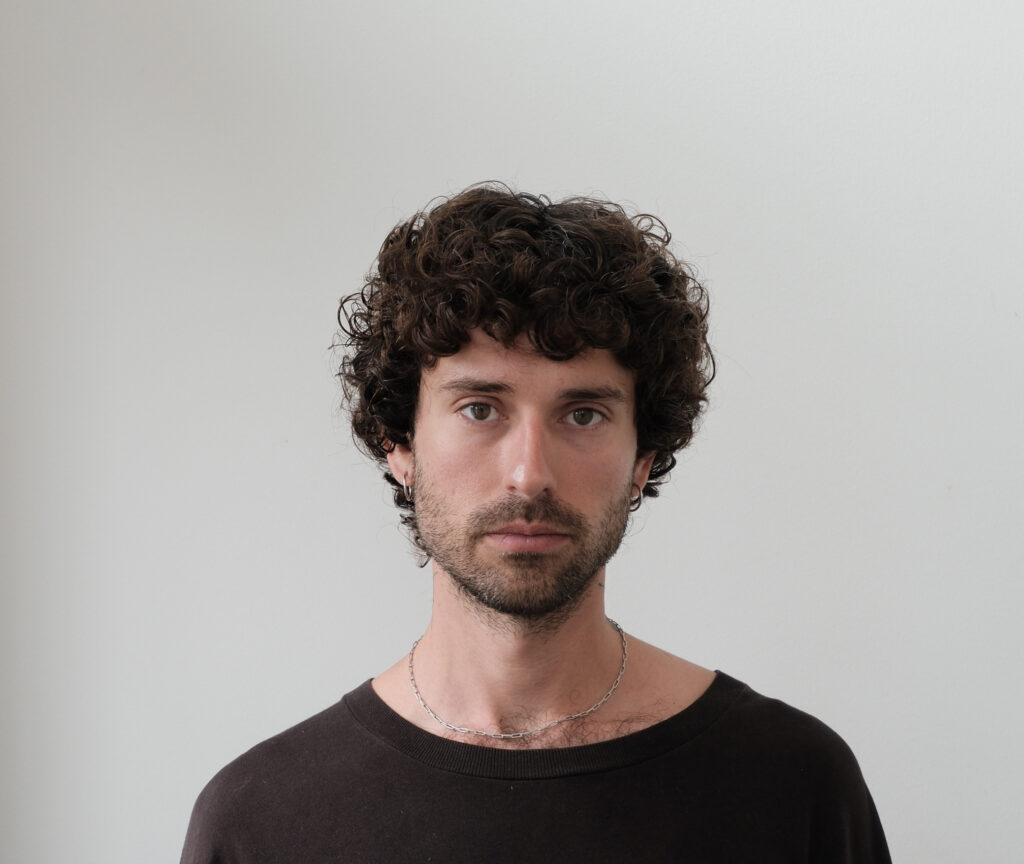
Image: Jonah Bayley
Alex Gibson is a Barbadian Canadian interdisciplinary artist based on the unceded traditional territories of the Musqueam, Squamish, and Tsleil-Waututh Nations (Vancouver, BC). They use images and archives as sites to examine queer spaces, temporalities, and architectures. Gibson holds an MFA from UBC, and their work has been exhibited in Barbados, Canada, Italy, Poland, and the United States.
CADIN LONDONO
El Cumbiatron, 2025
Game art
El Cumbiatron is a game that prioritizes experience over achievement. Inspired by the diversity of cumbia music and dancing styles across Latin America, it combines visual and musical expressions to represent the chaotic beauty of a Latinx Club. Designed to push players into a state of constant movement, El Cumbiatron is a digital, intergenerational, cross-continental party for all Latinxs, particularly those who have lost freedom of expression, third spaces, and connection to the motherland.
In Cadin’s 2D interactive game “El Cumbiatron”, players are thrown into the polyrhythms of Cumbia, an enduring Latin American music and dance form. Within a frenzied dance party, the player must simultaneously collect hearts, spin in time to the beat, and dance on stars. As an artist-created game, “El Cumbiatron” cleverly reengineers 8-bit pixel gameplay aesthetics and mechanics through a decolonial, Latinx lens. In Cadin’s nostalgic evocation of a diverse culture that emerged from Colombia’s Caribbean coast, “El Cumbiatron” invites players into a hand-coded third-space paradigm. The jury recognizes Cadin’s savvy, but also deeply felt, modification of dance rhythm games.
– Rea McNamara, writer and curator | 2025 EDAA guest juror
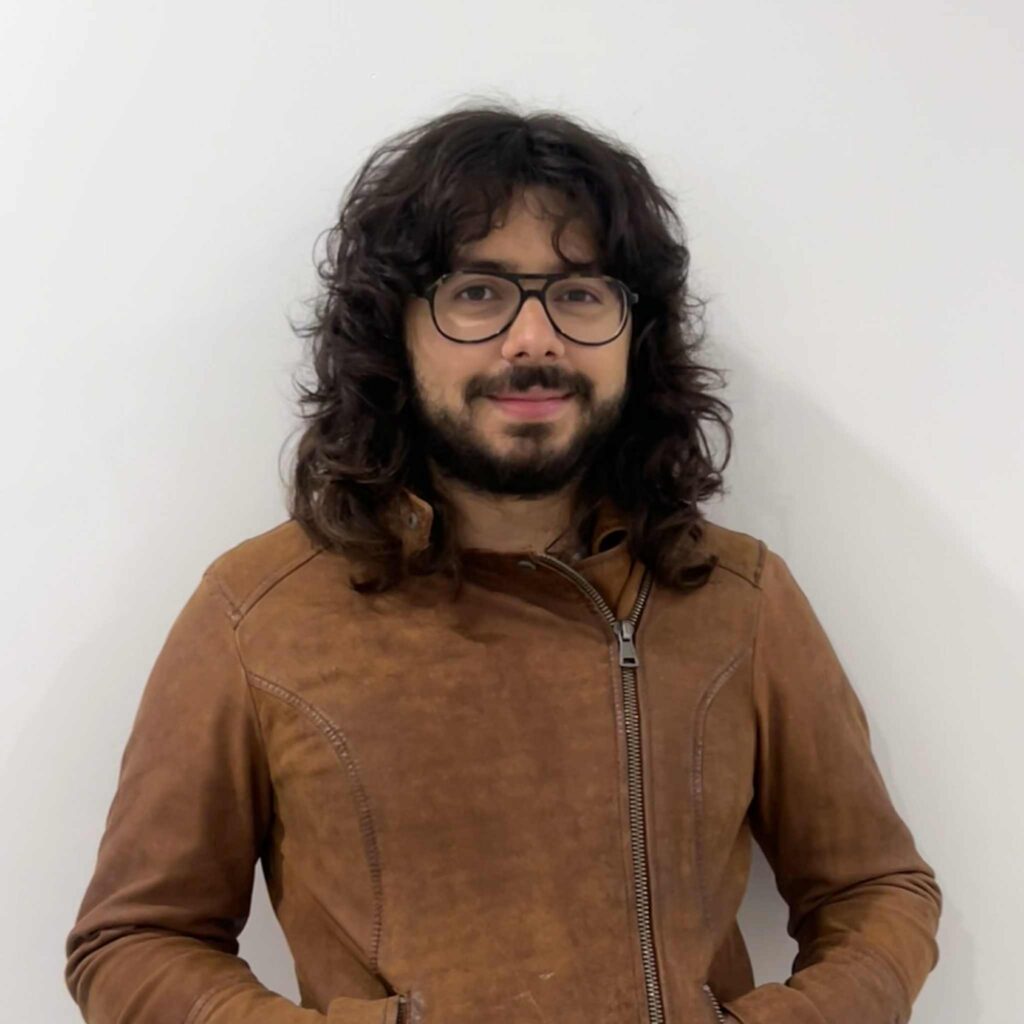
Image: Mariana Chajon Oliveros
Cadin Londono is a Colombian game developer born in Medellin, Colombia and based in Tio’Tia:ke (Montreal). His interest in coding began from a young age, watching his father code his own games in his free time. Cadin released his first videogame at age eighteen and is now busy creating videogames that look at life through an anticolonial lens. He holds a BA from McGill University with a major in Computer Science and a minor in Philosophy.
LAURA CARABALLO
No Me Demoro, 2024
Virtual reality
No Me Demoro is an interactive virtual space that encapsulates the experience of growing up in a Colombian household in the 2000s. Through iconic pop cultural objects and sounds of the time, visitors are invited to navigate the two level immersive experience through the perspective of a little girl. Prompted by the nostalgia of the immigrant experience and heightened by the architectural similarities between Bogotá and Montreal, No Me Demoro was born out of yearning for a time and place that cannot be revisited.
In “No Me Demoro” visitors are invited to navigate a domestic space informed by Laura’s childhood memories of Bogota, Colombia. The jurors were impressed by playful and thoughtful architectural environment, imbued with the nostalgia of an immigrant experience. Combining architectural references from Caraballo’s home city of Bogota and current home in Montreal, the jurors were impressed by the artist’s effort to include unique and distinctive details, such as Powerpuff Girl bedsheets and religious home decor, giving the feeling of moving through the artist’s own memory palace. This is a promising start for Laura and we look forward to watching how her practice will continue to grow.
– Lillian O’Brien Davis, Associate Curator, MacKenzie Art Gallery | 2025 EDAA guest judge
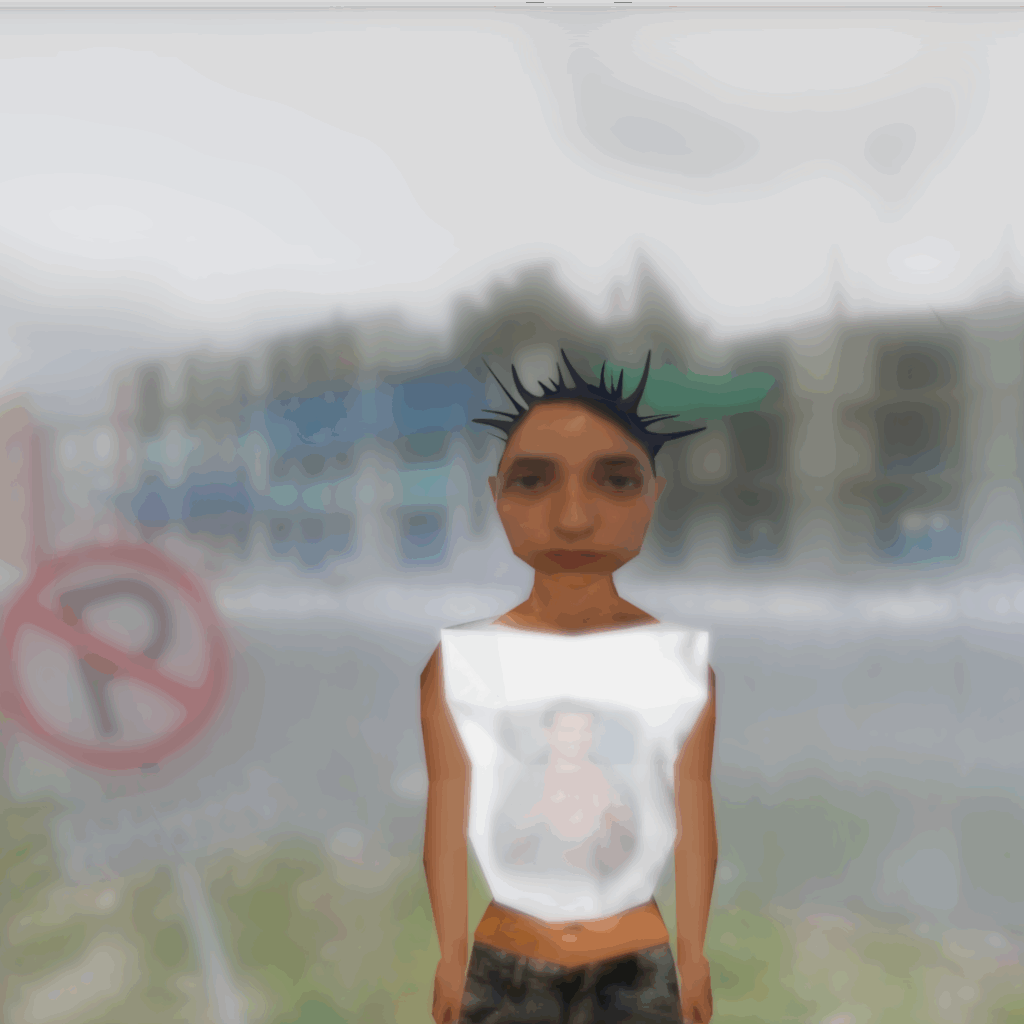
Laura Caraballo is an interdisciplinary artist born in Bacatá [Bogotá] and based in Tiohtià:ke [Montréal]. Her work uses technology to reimagine and create interactive, sensorial physical and virtual spaces that revisit the past and question its role in shaping Latinx futurist aesthetics and narratives. Laura is particularly interested in how we shape, and are shaped by, the spaces we inhabit within a temporal context, while exploring themes of home, memory, and consciousness.
KAHANI PLOESSL
Virtual Shiva, 2025
Multi-channel video game installation
Virtual Shiva is an exploration of the cosmic depth of generative spaces. Drawing from Hindu philosophy while reframing the language of contemporary gaming, the work reclaims and decolonizes the term avatar to take on its original spiritual significance as an avatār of Lord Shiva. As The Destroyer, Shiva embodies not only the force that brings endings, but also the one who clears the way for renewal and transformation. Within this cosmological framework of “technological Hinduism,” glitching is reimagined as a generative act: dissolution as the ground for regeneration.
“Virtual Shiva” shows a spectacular alignment of conceptual ideas and mechanical design. It asks to reconsider the relationship between the avatar, the player, and the inconsistent but generative nature of systems. It presents glitch as operable power, as avenue for (re)creation, as decolonial tool. While many games spaces rely on filmic elements to carry their narratives, Kahani’s work embeds is stories in the uniquely active elements of the medium – in action and play. The jury is thrilled to honour this work, for its entwinement of cultural, spiritual and technological meaning, its clever use of space and environment, and its insistence on experimental play.
– Maxwell Lander, Assistant Professor of New Media, Toronto Metropolitan University | 2025 EDAA guest judge

Image: Zoe Mar
Kahani (कहानी) Ploessl is a dimension-bending tech artist based in Markham, ON. Her work in generative, videogame, and installation art explores notions of the glitch and digital spiritualism. Guided by her Indian heritage, Kahani draws parallels between the cosmic philosophy of Hinduism and the pixelated manifestations of digital realms and avatar bodies. Her work considers the glitch as a purposeful gesture that can push our digital experiences away from their current structures and functions into experimental and transformative models for being.
